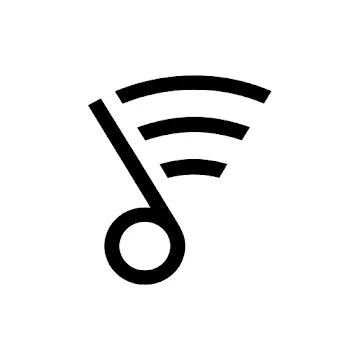Back to article
3342
Bose SoundTouch app does not detect product
If the app cannot find a speaker you have already added to your Bose account, it might show "searching" or "not available" when trying to select that product. To resolve this, try the following:
Be sure you are using the Bose SoundTouch app.
There are several Bose apps designed for different products. Your product works with the Bose SoundTouch app  . For more info, see Download the Bose SoundTouch app for compatible products.
. For more info, see Download the Bose SoundTouch app for compatible products.
 . For more info, see Download the Bose SoundTouch app for compatible products.
. For more info, see Download the Bose SoundTouch app for compatible products.Reset your product.
Much like rebooting a smartphone, your product might need to be reset on occasion to correct minor issues. For more info, see Resetting your product.
On your device, turn Wi-Fi off and back on.
On the device running the Bose app, go to the Wi-Fi settings and turn Wi-Fi off and back on again
Reboot the device running the Bose app.
Electronics might need to be rebooted from time to time to correct minor issues. This is typically done by powering off the device completely and then powering it back on again.
In the Bose SoundTouch app, sign out of your Bose account and then sign back in.
For more information, see Signing in and out of a Bose SoundTouch account.
See if the Wi-Fi light on your product is on.
The Wi-Fi status indicator on your product should illuminate (blinking or solid). If it does not illuminate, Wi-Fi might be disabled. For more information, see Turning on or off Wi-Fi for your product.
Close and re-open the Bose app.
Closing an app varies by device and operating system. Common methods for mobile devices are shown below:
On an iOS device:
On an iOS device:
- Depending on your iOS device, either double-tap the Home button or swipe up from the bottom center of the screen to view active apps.
- Swipe left or right to find the app you want to close.
- Swipe up on the app to close it.
- On the home screen, press and hold the app icon.
- Tap App info from the pop-up that appears.
- On the App Info screen, tap Force Stop.
Enable Bluetooth Permissions for iOS13 and up
With iOS 13 and up, when you install the SoundTouch App for the first time on your device, you will be prompted by Apple asking to enable Bluetooth permissions. If you choose "Don't Allow", you will not be able to complete the setup. Please enable Bluetooth permissions to complete setup:
- In your device settings, scroll down to your list of apps
- Select SoundTouch
- Under "ALLOW BOSE MUSIC TO ACCESS," enable "Bluetooth"
In your mobile device settings, be sure location and network permissions are turned on for the app.
Location permissions are used by the Bose app to detect and control your product. If location settings are disabled for the app, it will not work properly.
- For iOS devices:
- Go to Settings > Privacy > Local Network and be sure it is not disabled for the Bose app
- Go to Settings > Privacy > Location Services and be sure it is not disabled for the Bose app
- For Android devices, touch and hold the app icon, then tap App Info from the pop-up that appears. On the App Info screen, tap Permissions and be sure Your location is enabled.
Be sure your system is connected the same network as the device running the Bose app.
To determine the network your system uses, in the Bose app, go to Menu > Settings > About, select your system and view Network SSID. To determine the network your device uses, go to the device Wi-Fi settings. The connected network is typically checked, bolded or highlighted is some way. (Tip: A guest network is a different network than the home network.)
In the SoundTouch app, remove the system and then re-add it.
For more info, see Removing a system from your Bose SoundTouch account and Adding a system to your Bose SoundTouch account.
Uninstall and reinstall the Bose app.
In case an issue occurred with the app, uninstall it from your device, download and reinstall it, then try again.
Reboot your router.
Routers may need to be reset from time to time—much like rebooting a computer. Disconnect power from the router for 30 seconds, then wait for it to start up and connect. (Note: Any device connected to the Internet will be interrupted during the reset.)
Check to see if other devices on your network are using too much bandwidth.
When a device is active on your network, they use some of the available bandwidth of your router. Some tasks use more bandwidth than others—like video streaming, gaming, video calls, data backups, etc. If devices are performing these tasks, bandwidth can decrease for other devices. Turn off any device or app that might be using a lot of bandwidth, then check if performance improves. If possible, use an Ethernet cable instead of Wi-Fi to connect high-bandwidth devices to your network. This frees up wireless bandwidth for devices that need to be connected wirelessly.
If your router broadcasts more than one network (i.e. 2.4 GHz, 5 GHz, Guest), give the networks different names.
Many routers broadcast multiple networks, like a 2.4 GHz network, a 5 GHz network, and a guest network. If you see multiple networks with the same name when connecting a device to Wi-Fi, some devices might not be connected to the expected network.
In your router settings, try temporarily disabling the 5 GHz network and guest network. If the issue is resolved by using only the 2.4 GHz network, rename he 5 GHz network and guest network to something different than the 2.4 GHz network (e.g. MyNetwork2G, MyNetwork5G. and MyNetworkGuest). This will help you and your devices identify the correct network. (Tip: If you rename a network, any devices that were connected to the previous network name will need to be reconnected to the new network name in the device settings menu.)
In your router settings, try temporarily disabling the 5 GHz network and guest network. If the issue is resolved by using only the 2.4 GHz network, rename he 5 GHz network and guest network to something different than the 2.4 GHz network (e.g. MyNetwork2G, MyNetwork5G. and MyNetworkGuest). This will help you and your devices identify the correct network. (Tip: If you rename a network, any devices that were connected to the previous network name will need to be reconnected to the new network name in the device settings menu.)
If your Wi-Fi network uses an extender (like a Wi-Fi repeater, powerline adapter, or access point), try bypassing it.
Network extenders are used to extend the range of a network to cover a large area. Check if the issue is related to an extender by temporarily unplugging it. Since unplugging it might reduce the range of your network, move your system closer to the main router to test if the issue improves:
- If it does not improve, the issue is not related to the extender.
- If it does improve, try reconnecting the extender. Sometimes it can help to connect extenders after connecting to the main network.
- If it does improve but returns after reconnecting the extender, the issue could be related to the extender, its settings or placement.
In the settings menu of your router, try setting the network encryption type to WPA2.
Log in to your router and, in the settings menu, look for a network security or encryption option. Set this to WPA2 Only (other options might include, WPA or WPA/WPA2 Mixed). If WPA2 improves performance, use WPA2 as for router encryption. If you don't notice any difference using this setting, you can switch back to the previous setting. (Note: If you switch to WPA2 and other wireless devices on your network don't support WPA2, they may no longer connect to your network. This is more common with older Wi-Fi devices.)
In the router settings, try disabling Wireless Isolation mode, Wireless AP mode, or Access Point mode.
Log in to your router and look for an option labeled Access Point / AP mode, Wireless Isolation mode, or Wireless AP mode. This might be located in the wireless settings menu. If enabled, try disabling the option. If there is no improvement, you can always switch back to the previous setting.
Determine if the issue is related to the router firewall configuration.
IMPORTANT: Firewalls provide protection between a network and the Internet. Before trying this suggestion, consider whether or not it is safe to temporarily disable the firewall. If there are no concerns, try the following.
Log in to your router and, in the router settings, disable the router firewall. If performance improves while the firewall is disabled, the issue could be related to the firewall configuration. Re-enable the firewall, then review the available firewall settings in your router menu.Check for sources of wireless interference.
It's possible that interference from other wireless devices are affecting the wireless functionality of your product. Check for other wireless devices in the area of your product (i.e. another router, cordless phone, wireless printer, smart TV, etc.). To determine if a device might be interfering, try unplugging its power cord or disabling Wi-Fi on the device. If the issue is resolved when a particular device is removed, try placing that device farther away from your product, if possible. Additionally, if the device has a wireless channel setting, try a different channel.
If using the PC/Mac app or a music library stored on a computer, determine if the issue is related to the computer security configuration.
IMPORTANT: You computer security software provides protection between your network and the Internet. Before trying this suggestion, consider whether or not it is safe to temporarily disable the security software. If there are no concerns, try the following.
On your computer, temporarily disable any firewalls or security software one-by-one. If performance improves when one is disabled, the issue could be related to the configuration of that software. Re-enable all security software you disabled. Then, in the settings of the software affecting performance, add the SoundTouch app and SoundTouch music server as programs that the software should not block.If using the PC/Mac app, add exceptions for SoundTouch in any antivirus or firewall software.
If the firewall or security software on your computer prompts you to allow access to SoundTouch, allow access. If you deny access, SoundTouch system and software functaionality will be limited. If you already denied access, you can try uninstalling the SoundTouch app, reinstalling it, and then allowing accessing when prompted after opening the app again. If you are not prompted, go to the settings of your security software and add the SoundTouch app and SoundTouch music server as programs that the software should not block.
Restore the system to its factory defaults and restart the set up process.
For more info, see Resetting your product.
Was this article helpful?
Thank you for your feedback!

